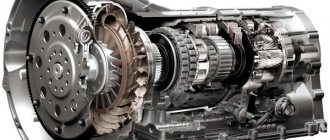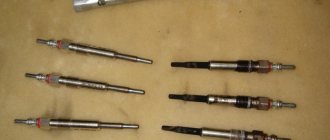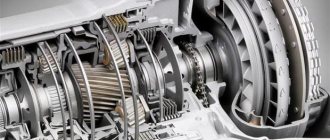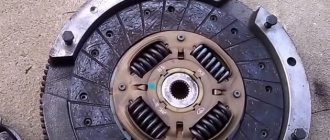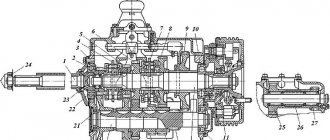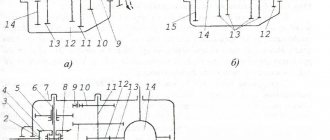The service life of the automatic transmission depends on the driver's driving style. Usually, beginners do not warm up the car and start abruptly: the automatic machine cannot withstand the load and quickly breaks down. Many people say that automatic transmissions are much weaker than mechanical devices. All machines should not be compared to each other.
There are three types of gearboxes. Different types of automatic transmissions have their strengths and weaknesses. They will be discussed further.
About the producers' conspiracy
Car owners like to say that manufacturers deliberately reduce the service life of automatic transmissions at the factory. Today they no longer produce automatic transmissions that can operate a million kilometers without major repairs. To this must be added the temperature changes in Russia from -40 to +40, as well as the love of car owners for fast driving and cold starts even in winter. Therefore, if in Japan Toyota automatic transmissions are given a service life of 7 years, then on roads in the Russian Federation this period can be cut by exactly half, if not more.
It’s another matter when the manufacturer assures the client that the automatic transmission can be operated without changing the lubricant in it. In fact, no - it's just a marketing ploy. For Volkswagen's DSG gearbox, it is recommended to change the oil every 30,000 kilometers.
All fables about the conspiracy of manufacturers can be avoided if you look into the automatic transmission more often and change the oil and components on time. And proper operation will allow you to extend its life for years.
Reliability and service life of classic automatic transmission
From the previous sentence about a robotic automatic machine, we can already conclude that the service life of a classic automatic transmission will be longer. If only because it does not require frequent replacement of transmission fluid. This suggests that its mechanical components are more reliable.
Read
Purpose of the Shift Lock release button on an automatic transmission
Attention! An oil change should be done after 60,000, 70,000 kilometers.
If we compare automatic transmission, robot and variator, then neither of the last two can produce as much as the automatic transmission does. The automatic transmission is the standard of reliability. Since it does not have complex mechanical components.
The mechanical clutch function here is performed by the automatic transmission torque converter. Torque from the engine is transmitted to it via ATF.
The oil circulates in the valve body and is distributed through the channels, affecting the actuators or clutches. By applying oil pressure to the clutches, gears are changed. But, recently, clutches began to be produced with an admixture of plastic. This reduced the lifespan of the clutches.
With timely replacement of the oil filter and cleaning of the radiator, the automatic transmission will last a long time. The torque converter is sensitive to the lubricant level. Therefore, it is recommended to monitor the oil level.
Read
What is the difference between rights to an automatic and rights to a manual?
The following actions increase the lifespan of an automatic transmission to 500,000 kilometers:
- warming up the machine in winter;
- avoiding slipping on off-road conditions;
- correct towing of a car in case of breakdown.
CVT gearbox and resource of this machine
The CVT transmission (or variator) is the second most reliable. The main difference from automatic transmission is the absence of fixed gear shift stages. But the CVT still uses a torque converter, just like the previous one.
The variator consists of two shafts with pulleys, on which a belt or metal chain is worn. Gear shifting occurs by changing the distance between the pulleys depending on the load on the vehicle. Due to the constant change in the gear ratio, the conditional gears change.
The car owner does not feel constant jerking and jerking when changing gears. Therefore, this box is chosen by those who love a comfortable ride. But the question is how long it lasts.
The service life of the variator is forty percent lower than that of a classic type automatic transmission. It's all about the appearance of chips and dirt in the oil from wearing metal parts. They act on the belt and pulley like an abrasive tool, abrading the surface. As a result, the belt must be changed after driving a car with a CVT for 90,000 kilometers.
Robotic box and its resource
The robotic transmission has a low resource. Since the robot was essentially supposed to become an automated manual transmission. Such a box should have received all the conveniences of an automatic transmission and be as simple as a manual transmission. But this did not happen due to the addition of servomechanisms and an additional clutch unit.
Read
12 inexpensive cars with automatic transmission
There are two types of robot:
- AMT.
- DSG.
AMT
Automated mechanics are servos and actuators that are responsible for shifting gears and clutches. The servo drive is responsible for the latter. He is the unfavorable part of the robot. Before giving a signal to change the gear, the drive must be guided by sensors based on engine speed, temperature and speed.
The relationship between them is not established from the factory. In terms of comfort it is inferior even to an automatic. The car owner constantly feels jolts and jerks when changing gears.
DSG
If AMT is a single-disk robot, then DSG consists of two disks. Volkswagen's DSG belongs to this type. One disk is responsible for even transmissions, the other for odd ones. This type of robot was released to reduce the same shocks and jerks that could not be avoided with the release of the AMT.
Cars with this type of automatic transmission are distinguished by their efficiency, travel comfort, and smooth acceleration. But in terms of lifespan, they are inferior even to a CVT. This type of automatic transmission is enough for 100,000 km. Then the disks and mechatronics (a kind of valve body in the DSG) start to break down, and the software starts to glitch.
Robots or need to be careful
The lowest resource of all the machines - to be honest, I don’t recommend buying it! What is a robot - essentially it is a manual gearbox, with a servo drive (or electronic drive) installed on it; it is this that replaces the “clutch pedal” and takes over all shifting functions.
This is the first “weak link” of robotic boxes, these drives are guided by many sensors - engine speed, temperature, speed, etc. – make decisions to switch or stay in this gear. These algorithms are not debugged, they work frankly poorly for almost all manufacturers, and the reliability of servos or electric drives leaves much to be desired - and therefore robots are far from ideal!
Another weak link that directly affects the service life is the “tricky” clutch discs, sometimes there is one, sometimes there are two, such as the DSG from Volkswagen. The reliability of these discs is also low, you have probably heard the scandals associated with these boxes from Volkswagen.
So my advice to you is that if you are buying a new car, you can still consider a robot, but I definitely do not advise you to use a used car, and especially a DSG!
The average service life of a robot ranges from 40 to 60,000 kilometers, why is it so little? YES because problems will definitely arise, either with drives, or with clutch discs, with software, or you never know with what.
So it’s better to take other transmissions, about them below.
How to check the serviceability of the automatic transmission during the initial inspection
Low mileage of an automatic transmission is not always the key to the health of a car when purchasing. There are cunning people who skillfully throw it off.
Read
5 Decent Automatic Motorcycles
Therefore, you need to pay attention to the following signs:
- ATF level and quality;
- behavior of the vehicle when traveling.
Attention! When buying a car, you need to drive it for 15 kilometers to feel the behavior of the automatic transmission. Many errors only come out when the box is warmed up.
Checking the level and condition of the oil in the automatic transmission
Before buying a car, you need to check the oil level in the automatic transmission.
This is done as follows:
- Start the vehicle engine.
- Warm it up by letting it run for 10 minutes or driving the car 10 kilometers.
- Stop on a flat surface.
- Unscrew the dipstick and look at the HOT mark.
- The liquid level should reach this mark. If less, then it is possible that the torque converter has not received additional lubricant for a long time.
Along with the level, it is recommended to pay attention to the color. If the ATF fluid is black or dark in color mixed with small wear particles, then the vehicle has definitely not been maintained. This means that the automatic transmission can break down at any time after purchase.
Attention! It is recommended to use original replacement oil.
Now the car owner must decide whether to buy a car or not. After all, you will have to change not only the ATF fluid in the machine and the filter, but also possibly some internal parts.
Read
Diagram and device of planetary transmission of automatic transmission
To ensure the integrity of the automatic transmission, it must be checked while driving.
Assessing the quality of automatic transmission while driving
To check the quality of the automatic transmission, you need to drive the vehicle for about 15 kilometers. Since usually all automatic transmission errors appear only when the device is warm.
If the car jerks when changing gears, the car owner hears knocks or feels jolts while the automatic transmission is operating, then such a device requires major repairs.
Automatic or manual
If we conduct a comparative analysis of these types of transmissions based on their advantages and disadvantages, then we need to take practicality criteria as a basis, which affect most aspects of driving and owning such a car. The criteria are the following:
Price
An automatic transmission, as a rule, has a higher price tag than a manual transmission; also, some not very modern automatic transmissions have higher fuel consumption. But fuel efficiency mainly concerns only driving in city mode; on the highway the difference is practically leveled out, since the gearbox does not work much at cruising speeds.
Maintenance and repair
Since the automatic transmission has a more complex structure, its repair will be more expensive and more difficult. An automatic transmission requires more oil, and the cost of this oil is more expensive than that used for manual transmissions. However, many manufacturers of automatic transmissions claim that the oil in the machine does not need to be changed for the entire service life. The mechanics are simple in design, therefore cheaper and easier to maintain. Spare parts are usually available and inexpensive.
Efficiency and acceleration dynamics
Many experts and experienced drivers claim that a manual transmission has better acceleration, and moreover, it has higher efficiency. The mechanics give an experienced racer the opportunity to realize the full potential of the engine, its power and torque. But there are exceptions - robotic gearboxes (like mechanical ones, but with two clutches and there are some peculiarities in their operation).
Reliability
As the wise said, the simpler the design, the more reliable it is; accordingly, in this regard, mechanics are again ahead. A simple design is less likely to break and is more tolerant of tolerances (extreme conditions). If you need to tow a car on a cable (flexible hitch), then this is only possible for a car with a manual transmission. A car with an automatic transmission will have to be transported using a tow truck. It is also easier to operate a car with a manual transmission in extreme conditions: icy conditions, off-road conditions, mud, and so on.
Resource
Since the maintainability of a manual transmission is much higher than that of an automatic transmission, the service life parameter is also in its favor. Most manual transmissions survive more than one engine, the original one and another, and continue to function normally. The same cannot be said about an automatic machine; extending the service life is difficult and expensive, and more often than not it is simply impossible.
Winter driving
In a car equipped with a manual transmission, the driver has more control over gear shifting, which makes it easier to skid in the snow or drive in icy conditions. An automatic transmission is not designed for slipping, and frequent switching can lead to overheating of the transmission oil.
Well, six criteria are behind us, and so far the manual transmission is ahead in all respects, the cost is lower, the efficiency is higher, operation is simpler and cheaper, the service life is extended, it holds up better under extreme conditions, the reliability is higher, the acceleration dynamics are better. What is so special about the machine then?
Comfort
An automatic transmission is designed for driver comfort; in this regard, a manual transmission is inferior to it like a cart compared to an airplane. Even the most inexperienced driver can easily just get into the car and move off smoothly without creating an emergency situation. As for the manual transmission, the driver will need maximum concentration, which then turns into automaticity. It is unlikely that you will be able to relax by constantly squeezing the clutch pedal and pulling the gearshift lever. In urban conditions, especially when the traffic is dense and there is a lot of congestion, it is really tiring.
Engine and clutch life
Here there is an automatic transmission in front, which simply will not allow you to exceed the optimal speed; the engine with an automatic overheats much less often than with a manual. In addition, with mechanics, sometimes you can jam the wrong gear, which seriously overloads the engine. And it happens that an inexperienced driver forgets to shift higher and drives for a long time at high speeds. This quickly depletes the engine's lifespan. The same thing happens with the clutch - in an automatic car you don’t need to constantly depress the pedal to disengage the clutch.
What needs to be done to ensure that the automatic transmission serves for a long time and without problems
The following table shows how to operate one or another type of automatic transmission in order to increase the life of the automatic transmission:
| Automatic transmission type | Recommended mileage before replacing ATF (in km) | Exploitation |
| Machine | 70 000 | Avoid oil starvation, sudden starts, incorrect and long towing, and slipping on country roads. It is necessary to regularly inspect, replace and top up ATF. |
| Variable speed drive | 40 000 | |
| AMT | 30 000 | |
| DSG | 30 000 |

